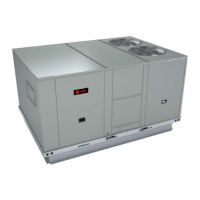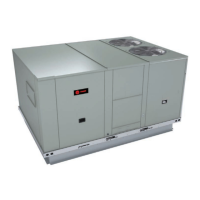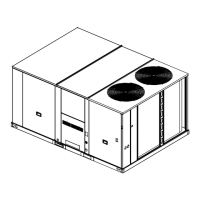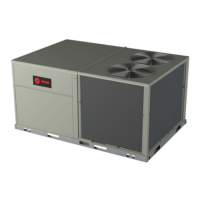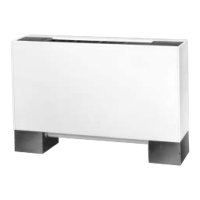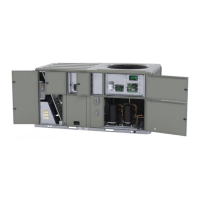RT-SVX50J-EN
21
NNOOTTIICCEE
UUssee CCooppppeerr CCoonndduuccttoorrss OOnnllyy!!
FFaaiilluurree ttoo uussee ccooppppeerr ccoonndduuccttoorrss ccoouulldd rreessuulltt iinn
eeqquuiippmmeenntt ddaammaaggee aass tthhee eeqquuiippmmeenntt wwaass nnoott
ddeessiiggnneedd oorr qquuaalliiffiieedd ttoo aacccceepptt ootthheerr ttyyppeess ooff
ccoonndduuccttoorrss..
1. Use copper conductors unless otherwise specified.
2. Ensure that the AC control wiring between the
controls and the unit’s termination point does not
exceed three (3) ohms/conductor for the length of
the run.
NNoottee:: Resistance in excess of 3 ohms per conductor
could cause component failure due to
insufficient AC voltage supply.
3. Be sure to check all loads and conductors for
grounds, shorts, and mis-wiring.
4. Do not run the AC low voltage wiring in the same
conduit with the high voltage power wiring.
5. Route low voltage wiring as per Figure 14, p. 21.
Table 2. Electromechanical thermostat 24V AC conductors with electromechanical unit
Distance from Unit to Control Recommended Wire Size
0 - 30 feet
22 gauge
0 - 9.1 m 0.33 mm^2
31 - 50 feet
20 gauge
9.5 - 15.2 m 0.50 mm^2
51 - 75 feet
18 gauge
15.5 - 22.9 m 0.75 mm^2
76 - 125 feet
16 gauge
23.1 - 38.1 m 1.3 mm^2
126 - 200 feet
14 gauge
38.4 - 60.9 m 2.0 mm^2
Figure 14. Conventional thermostat field wiring diagram
IInnssttaallllaattiioonn

